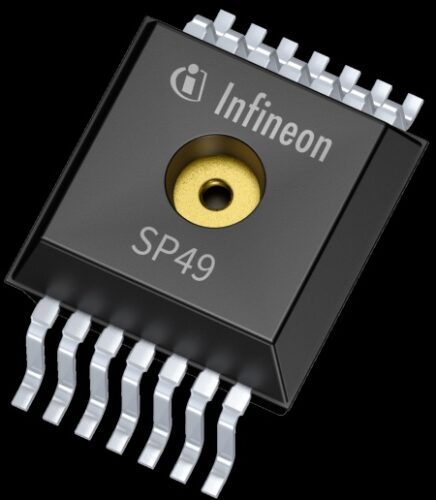Intelligent Sensor Frontier In Tire Pressure Monitoring Systems
- Dive into the new tire pressure monitoring systems that revolutionise tire maintenance with low power monitoring, swift acceleration sensing, and on-demand measurement capabilities.
- A beacon of integration and innovation, catering to the modern automotive sector’s ever-evolving demands.

Infineon Technologies leverages its established experience in the automotive sector and its proprietary glass-silicon-glass Micro-electromechanical Systems (MEMS) sensor technology to introduce the groundbreaking XENSIV SP49 tire pressure monitoring sensor in the automotive tire pressure monitoring system (TPMS) segment. This sensor embodies an intricate fusion of MEMS sensors with an Application-Specific Integrated Circuit (ASIC), facilitating innovative tire functionalities that amplify the capabilities of modern tire pressure monitoring systems. It is perfectly adapted to support intelligent tire operations, including automatic on-tire position sensing, assistance with tire inflation, prompt tire blowout identification, and accurate load detection.
The key features include:
- Powerful 32-bit Arm M0+ core
- Large flash memory
- Ample RAM
- Low Power Monitoring (LPM)
- Optimized, fast acceleration sensing
It is a direct pin-to-pin substitute for the company’s preceding SP40 TPMS offerings. It stands out with its hardware-centric master/slave I²C interface coupled with software-emulated universal asynchronous receiver-transmitter (UART), serial peripheral interface (SPI), and Pulse-width modulation (PWM) interfaces, positioning it as a prime choice for sub-1GHz applications, while also being scalable for Bluetooth Low Energy (BLE) TPMS. Meeting Automotive Safety Integrity Level(ASIL) -A standard, this sensor embodies a high degree of integration. It is fine-tuned to facilitate all the essential functionalities needed in a contemporary TPMS module. Housing an integrated microcontroller, assorted sensors, and user-friendly peripherals necessitates only a handful of passive components to assemble a fully operational TPMS sensor module. Its design emphasises low power usage, rendering it an option for battery-operated applications.
Besides the capability to initiate a wake-up through the built-in interval timer, these products aptly cater to independent remote pressure sensing solutions necessitating minimal power usage. Within these contexts, using a Low-frequency (LF) receiver equipped with a wake-up feature and top-tier sensitivity facilitates measurements that can be activated on demand.







